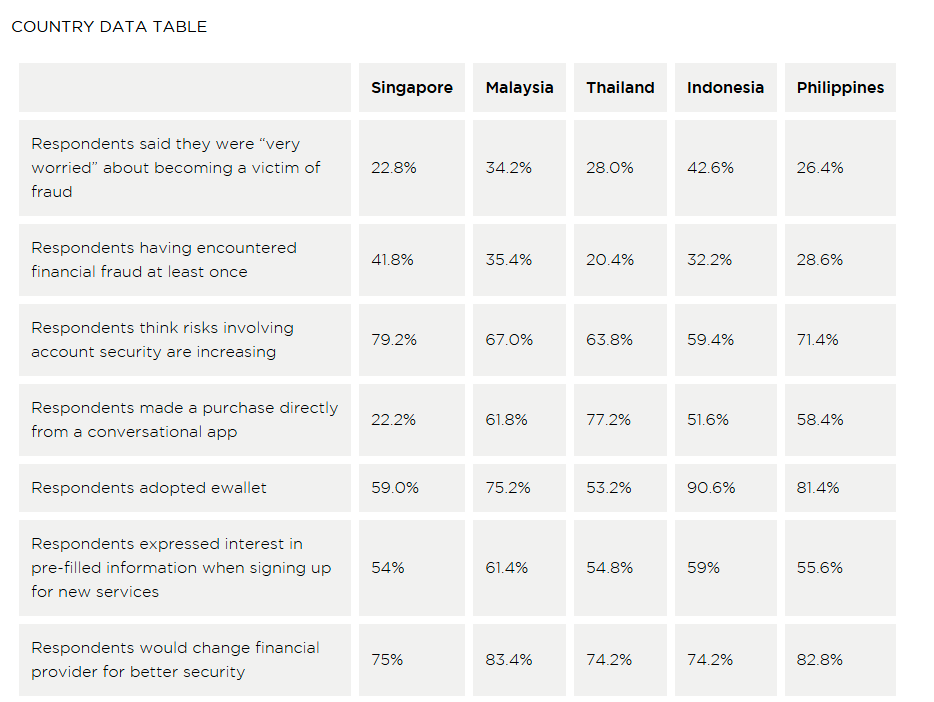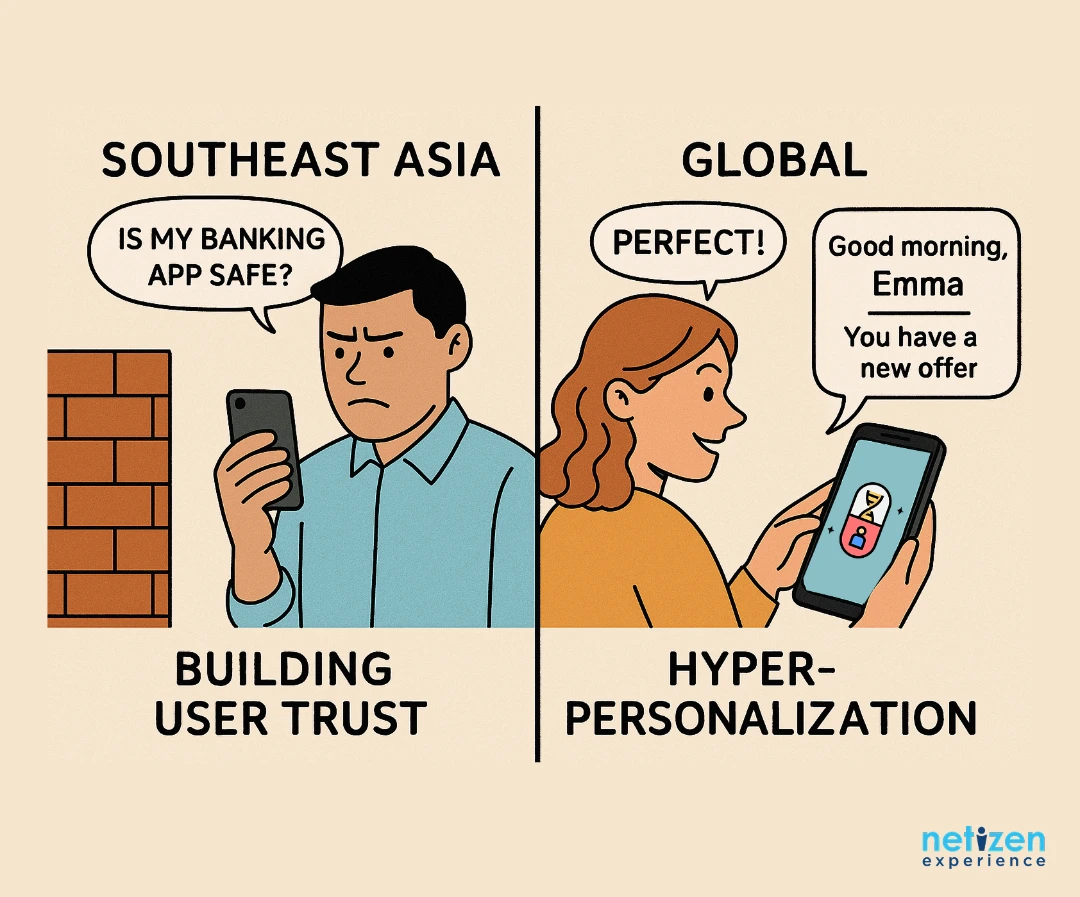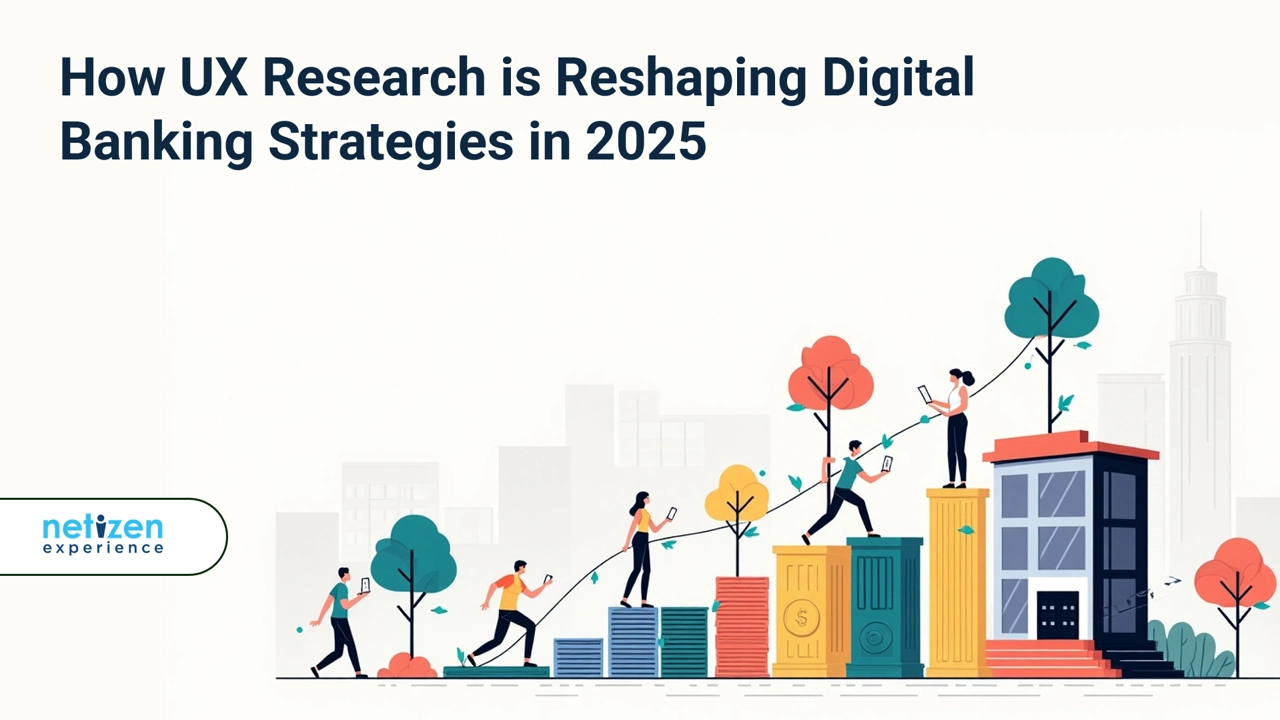Imagine this: You urgently need to transfer money, but the banking app crashes mid-transaction. You restart it, but now you’re unsure—did the payment go through? Will you try again?For a moment, you feel a surge of panic.But take a deep breath and let’s zoom out for a moment. This isn’t just your frustration—it’s happening to millions of banking customers worldwide. In an era where people expect banking to be as seamless as ordering food online, a single bad experience can push customers away for good. This is why UX in banking is no longer just about making things look good—it’s about survival.In Europe and North America, banks are racing to integrate AI-driven hyper-personalization, anticipating users' needs before they even arise. Meanwhile, in Southeast Asia, banks are fighting a different battle—building trust among millions of new digital users transitioning from cash-based economies.But how did UX evolve from usability testing to a strategic pillar in banking? And more importantly—what’s next?To understand this shift, let’s first explore how UX research is shaping banking strategies in different parts of the world.[ez-toc]
How UX Research Shapes Banking Strategy in Southeast Asia vs. Global Markets
Global Banks: AI Knows You Better Than You Do
The modern banking customer no longer waits for problems to happen—they expect their bank to predict and prevent issues before they even occur. That’s why global banks are shifting towards AI-driven hyper-personalization, using real-time data to craft intelligent, proactive user experiences:
- Bank of America’s Erica AI assistant doesn’t just remind users to pay their bills—it predicts when they might forget and nudges them in advance.

Bank of America’s Erica AI assistant
- JPMorgan Chase uses data to spot patterns in your spending, helping customers optimize their finances without them lifting a finger.
- Emirates NBD (ENBD) provides automated financial coaching through AI, making wealth management accessible to everyday users.
For these banks, UX isn’t just about usability—it’s about staying ahead of customers' financial needs.But while AI and personalization dominate global banking UX, over in Southeast Asia, the challenges are different. Here, UX is about earning trust.
Southeast Asia: The Battle for Trust
For decades, banks have competed on speed and convenience. But in 2025, the real challenge is trust—especially in Southeast Asia, where digital banking is still gaining traction.The biggest UX challenge isn’t just about making banking faster—it’s making it feel safe and accessible. According to GSMA's 2024 survey, over 50% of Southeast Asian consumers worry about online security, and 25% have experienced financial fraud.

GSMA Survey: SEA Consumers Raise Online Security Concerns
Here, UX isn’t just about usability—it’s about ensuring first-time users don’t feel overwhelmed or exposed. So how has UX evolved from usability to a strategic driver of banking success? And how do SEA banks compare to their global counterparts? Let’s dive in.
- Tonik Bank (Philippines) makes opening an account as easy as downloading an app—no paperwork, no long wait times.
- AEON Bank (Malaysia) focused on "trust-first" design, ensuring security measures didn’t make users feel like they were being locked out of their own money.

With these different priorities, UX research is now driving the very strategies banks use to compete.Now that we've seen how UX shapes different banking markets, let’s explore how it actively prevents financial stress for customers.
UX Research as the Driving Force Behind Banking Innovation
Preventing Financial Stress
You check your balance and realize you’ve overspent. Sound familiar?It’s a scenario banks are increasingly working to prevent, using UX research to create proactive interventions before customers even realize they need help.
- Monzo (UK) doesn’t just warn users about a low balance—it predicts if they’re about to overdraft and sends an alert in advance.
- Santander Bank (Argentina) revamped its digital platform based on user research, leading to a 20,000+ increase in digital transactions in just one month.
By identifying pain points before they happen, UX research is shifting banking from reactive problem-solving to proactive customer care.However, proactive banking requires real-time insights, so how do banks test and improve their UX at such a fast pace? The answer lies in AI-powered UX testing.
AI-Powered UX Testing
Some banking apps seem to get better overnight. That’s because banks are now using AI to analyze millions of user interactions in real time, automatically detecting friction points and adjusting designs on the fly.
- Revolut continuously tweaks its interface based on real-world user behavior, ensuring a seamless experience.
- DBS Bank (Singapore) uses data-driven UX research to make sure digital banking feels as intuitive as visiting a physical branch.
This shift means UX research isn’t just about designing great experiences—it’s about constantly optimizing them.But while AI makes banking smoother, it also raises another challenge: How do you balance security with simplicity?
Security vs. Simplicity
Security is non-negotiable in banking, but if security measures feel too frustrating, customers will switch banks.Some banks are tackling this head-on:
- NatWest (UK) integrates OpenAI-powered fraud detection without disrupting users’ login experiences.
- Arab Bank redesigned its security verification process to be both frictionless and highly secure.
[embed]https://youtu.be/_SWtdTPruSU[/embed]
Retail Mobile Banking App UX Design by UXDA
By making security invisible yet effective, these banks prove that UX doesn’t have to come at the cost of customer confidence.Clearly, UX’s role in banking is now going beyond just design—it’s shaping entire business strategies.
From UX Design to UX Strategy: A Shift in Banking Mindset
UX researchers are no longer just supporting product teams—they’re helping banks make high-level strategic decisions.
- Commonwealth Bank of Australia created "Hey CommBank," an AI-powered chatbot that cuts call wait times in half.
- OCBC Bank embeds UX research into compliance strategies, ensuring that customers can navigate regulations without feeling overwhelmed.
With UX professionals influencing everything from customer service automation to regulatory design, banking is entering a new era where UX is the foundation of strategy.
What’s Next?
Looking ahead, UX will continue to shape how people interact with their banks. Some of the biggest trends to watch include:
- AI-Driven Hyper-Personalization: Your banking app might soon know what you need before you do. From predicting expenses to detecting fraud in real time, AI is reshaping digital banking. Curious how? We broke it down in our article The Future of AI in UX: Trends in 2025—check it out!
- Embedded Finance: Imagine accessing banking services directly through WhatsApp or TikTok.
- Regulatory UX: Making compliance effortless for users.
- Behavior-Driven Banking: Shaping user habits through smarter design.
Banks that fail to invest in UX research will fall behind—not because their tech is outdated, but because their customers will simply go elsewhere.
Conclusion
Think back to that moment of frustration—when your banking app crashed, or when you couldn’t figure out where your money went. Those small moments define how we feel about our banks.The most successful banks aren’t the ones with the lowest fees or the most advanced AI—they’re the ones that make their users feel secure, understood, and in control.In the race for digital banking dominance, UX isn’t an afterthought—it’s the winning strategy.





